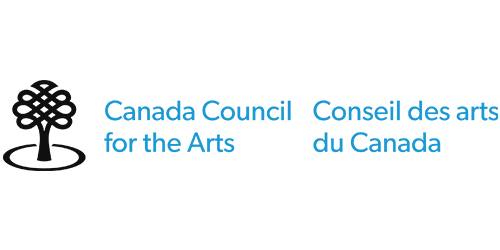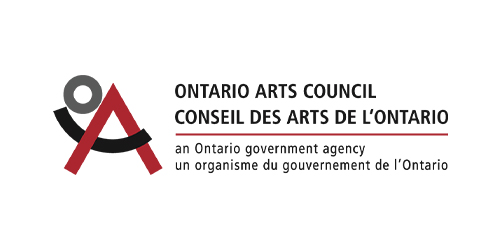Bach Brandenburg Concertos
Filmed May 26–27, 2022 at Koerner Hall, TELUS Centre for Performance and Learning
Johann Sebastian Bach
1650–1785
Orchestral Suite no. 3 in D Major, BWV 1068
Ouverture – Air – Gavotte I & II – Bourrée – Gigue
Led by Julia Wedman, violin
Brandenburg Concerto no. 5 in D Major, BWV 1050
Allegro – Affettuoso – Allegro
Charlotte Nediger, harpsichord
Grégoire Jeay, flute
Geneviève Gilardeau, violin
Brandenburg Concerto no. 6 in B-flat Major, BWV 1051
Allegro – Adagio ma non tanto – Allegro
Brandon Chui & Patrick G. Jordan, violas
Guy Fishman, violoncello
Brandenburg Concerto no. 4 in G Major, BWV 1049
Allegro – Andante – Presto
Julia Wedman, violin
Alison Melville & Dominic Teresi, recorders
Brandenburg Concerto no. 3 in G Major, BWV 1048
Allegro — Adagio – Allegro
Julia Wedman, Geneviève Gilardeau & Cristina Zacharias, violins
Patrick G. Jordan, Brandon Chui & Christopher Verrette, violas
Guy Fishman, Susie Napper & Jessica Korotkin, violoncellos
Pippa Macmillan, double bass
Charlotte Nediger, harpsichord
Tafelmusik Baroque Orchestra
Violin
Julia Wedman, Louella Alatiit, Elizabeth Loewen Andrews, Geneviève Gilardeau, Christopher Verrette, Cristina Zacharias
Viola
Brandon Chui, Patrick G. Jordan, Christopher Verrette
Viola da gamba
Susie Napper, Jessica Korotkin
Violoncello
Guy Fishman, Susie Napper, Jessica Korotkin
Double Bass/Violone
Pippa Macmillan
Flute
Grégoire Jeay
Recorder
Alison Melville
Recorder/Bassoon
Dominic Teresi
Oboe
John Abberger, Marco Cera
Harpsichord
Charlotte Nediger
Among the most recognized and popular works in baroque music, the Brandenburg Concertos encapsulate the qualities that affirm Bach’s brilliance as a composer. Creativity, originality, and boldness are on display in these ground-breaking concertos that feature novel combinations of solo instruments. It was 40 years ago, in 1982, when a young Tafelmusik Orchestra first performed the complete cycle of Brandenburg Concertos. Tafelmusik’s recording of the Brandenburg Concertos for Sony earned the orchestra its fourth JUNO award, in 1995. They have been part of Tafelmusik’s core repertoire ever since, and the musicians delight in any chance to return to them. In this concert we offer Concertos 3, 4, 5 & 6, and add the most popular of Bach’s orchestral suites, the Third Suite in D Major.
Program Notes
By Charlotte Nediger
Six Concertos with Several Instruments
Dedicated to His Royal Highness
Monseigneur Christian Ludwig, Margrave of Brandenburg, &c.
by His very humble and very obedient servant
Johann Sebastian Bach
Capellmeister of His Most Serene Highness,
the Reigning Prince of Anhalt-Cöthen
Your Royal Highness,
As I had a couple of years ago the pleasure of appearing before your Royal Highness, by virtue of Your Highness’ commands, and as I noticed then that Your Highness took some pleasure in the small talents which heaven has given me for music, and as in taking leave of Your Royal Highness, Your Highness deigned to honour me with the command to send Your Highness some pieces of my Composition: I have then in accordance with Your Highness’ most gracious orders taken the liberty of rendering my most humble duty to your Royal Highness with the present Concertos, which I have adapted to several instruments; begging Your Highness most humbly not to judge their imperfection with the rigour of the fine and delicate taste which the whole world knows Your Highness has for musical pieces; but rather to infer from them in benign Consideration the profound respect and most humble obedience which I try to show Your Highness therewith. For the rest, Sire, I beg Your Royal Highness very humbly to have the goodness to continue Your Highness’ gracious heart as the wish that I may be employed on occasions more worthy of Your Royal Highness and of Your Highness’ service, I, who without an equal in zeal am, Sire, Your Royal Highness’ most humble and obedient servant.
Jean Sebastien Bach
Cöthen, March 24, 1721
So reads the dedication on the title page of the fair copy of the so-called Brandenburg Concertos. Margrave Christian Ludwig, uncle of the “Soldier King” of Prussia, Friedrich Wilhelm I, was a cultured and musically literate man. He kept his own Capelle at Schloss Charlottenburg in Berlin, and had a collection of scores of concertos “by diverse masters,” most of them Italian. The meeting with Bach cited in the dedication probably took place in 1719, when Bach was in Berlin to take possession of a new harpsichord for the Cöthen court built by the Berlin instrument maker, Michael Mietke. Bach may well have had the opportunity to study the Margrave’s concerto collection, and his own offering of a score of six concertos “avec plusieurs instruments” eventually joined the others on the Margrave’s library shelves.
Bach’s title was apt, as the variety and originality of instrumentation in these concertos is their trademark feature and far exceeds that of any comparable set from the period. The choice of instruments was probably inspired by the musicians of the Cöthen court, where Bach was employed as music director. The 16 regular members of the court orchestra included almost all the instrumentalists needed to perform the six concertos. The works are concerti grossi, each with a group of soloists supported by a string orchestra. In this case Bach undoubtedly had in mind a string “orchestra” of only one player per part, resulting in works with a distinctly chamber quality.
The Third Concerto is thought to have been composed as early as 1712, clearly inspired by the four-violin concertos in Vivaldi’s L’Estro armonico. As in the Vivaldi model, Bach creates an orchestra out of a group of solo string players, in this case three violins, three violas and three cellos, with double bass and harpsichord continuo. Bach constantly shifts the roles of the players: at times the three groups engage in playful dialogue; at other times an individual steps forward for a brief solo; and at yet other times all eleven instruments come together to play an “orchestral” tutti. He composed only the two outer movements, linking them with two chords, leaving one or more of the players to improvise as they see fit. Bach later re-used the first movement of the concerto as the sinfonia for Cantata 174 “Ich liebe den Höchsten von ganzem Gemüte,” adding parts for two horns and three oboes to the already rich sound of the strings.
The Fourth Concerto features a trio of solo instruments: a solo violin is paired with two recorders, the violinist taking the lead in brilliant passagework. The violin yields to the recorders only in the slow movement, playing an accompanying role to their plaintive echos (Bach lists them as flauti d’echo in the score). The entire work is exceptionally finely crafted, even by Bach’s standards: he took the time, for example, to create three subtly different parts for the three continuo players (harpsichord, cello, and violone), to ensure perfect balance with the solo parts.
The Fifth Concerto was undoubtedly inspired by the new Mietke harpsichord. This concerto has been described as both revolutionary and evolutionary: for the first time in a concerto the harpsichord steps forward from its traditional function as an accompanying continuo instrument to take on a solo role, and it does so in spades. The harpsichord overshadows the two other solo instruments (flute and violin), claiming all the virtuoso passagework and silencing them altogether in a massive solo cadenza at the end of the first movement. No fewer than 13 manuscript copies of this concerto have survived from the 18th century, in various hands, a testament to the work’s popularity then as now.
The most intimate work in the collection is the Sixth Concerto, scored for a solo group of two violas and cello, accompanied by an “orchestra” of two viola da gambas, violone, and harpsichord. The choice of two solo violas was very unusual: like the harpsichord, the role of the viola was generally to complete an ensemble or orchestra. Bach apparently enjoyed playing viola, which may have been the inspiration behind featuring them in solo roles, both here and in some of his cantatas. He again balances the soloists masterfully, the harmonious and “gentle” sound of the gambas and violone allowing the violas to shine. They play in dialogue with a solo cello, the whole creating a truly unique soundscape.
We preface our selection of Brandenburg Concertos with a performance of what may be the original form of what has come to be known as Bach’s Third Orchestral Suite. All four suites survive only in manuscript copies made by students and colleagues of Bach, and all suites have interesting histories. In its final form, Third Suite is scored for trumpets, timpani, oboes, bassoon, and strings. Research suggests that in its original version, thought to have been written in Cöthen at about the same time as the Brandenburg Concertos, it did not include trumpets and timpani. The overture, with the addition not only of trumpets and timpani, but also choir, was then used as the opening chorus in Cantata 110, “Unser Mund sei voll Lachens,” written for a Christmas service in Leipzig in 1725. A few years later, Bach turned to the work again, creating the suite as we now know it, presumably for performance at one of the regular concerts at Leipzig’s Collegium Musicum. For this final version he retained the trumpet and timpani parts of the chorus, with slight alterations, and reworked the original dance movements to include the brass. The Third Suite is arguably the most popular of Bach’s suites, perhaps because of the inclusion of the exquisite Air. The latter is an oasis of beauty and calm between the energetic overture and the boisterous final dances. Mendelssohn championed this suite, and reports in one of his letters that he played the work for Goethe in 1830.
You can view images of Bach’s fair copy of the score of the Brandenburg Concertos in the Staatsbibliothek zu Berlin here.
Thank you to our government sponsors



